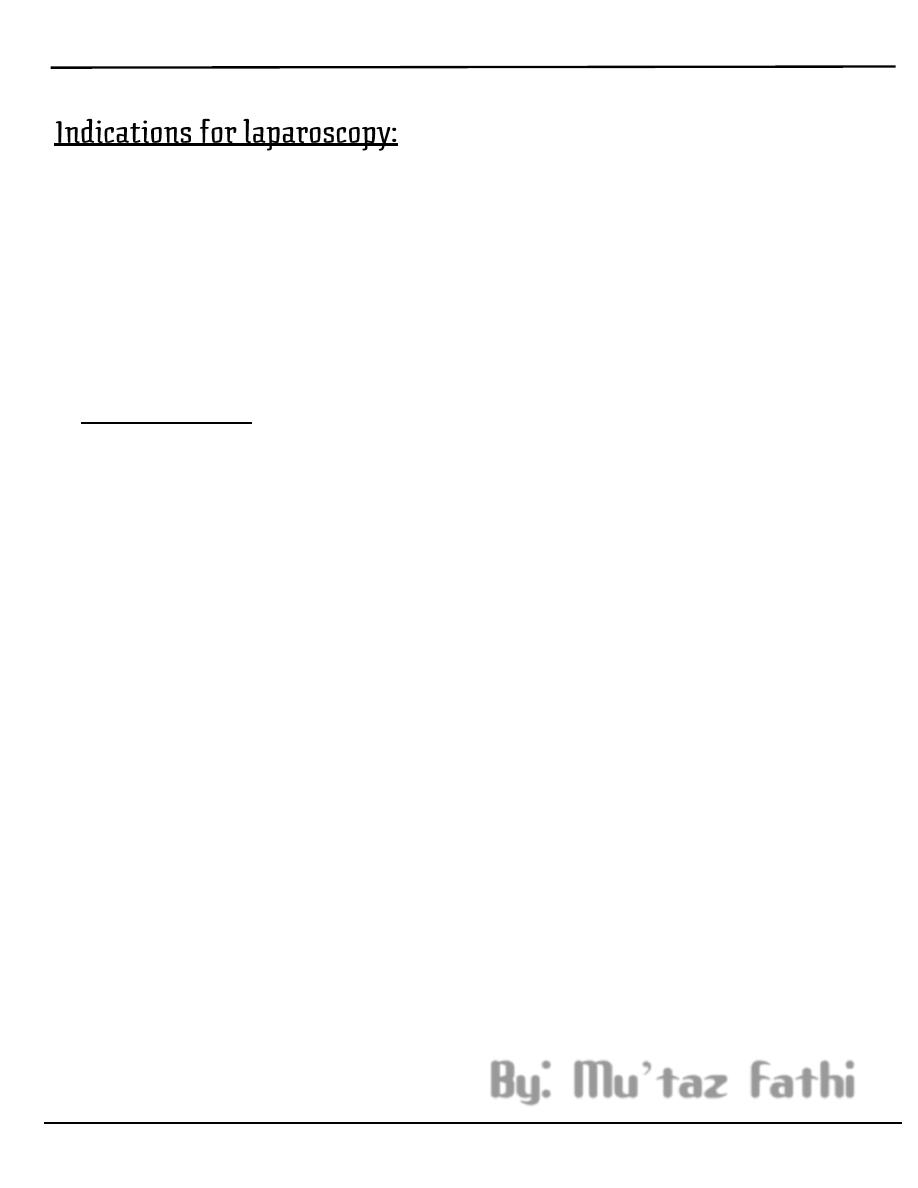
Lecture 1
النسائية
د
.
براء لقمان
Hormone Therapy in Gynecology
Page 1 of 11
Hormone Therapy in Gynecology
Estrogen:
A female steroid hormone that is produced by the ovaries and, in lesser
amounts, by the adrenal cortex, placenta, and male testes. Estrogen helps
control and guide sexual development, including the physical changes
associated with puberty. It also influences the course of ovulation in the
monthly menstrual cycle, lactation after pregnancy, aspects of mood, and
the aging process.
Major estrogens
1. Estradiol-17β: most potent natural estrogen and major secretory product
of ovary.
2. Estrone: also of ovarian/adrenal origin; exists in equilibrium
with estradiol.
3. Estriol: not a product of the ovary, estriol is the predominant urinary end
product of estrogen metabolism. In the pregnant woman, estriol, as
estradiol and estrone, are secreted by the placenta. Displays minimal
estrogenic activity.
Estradiol (E2) is the predominant estrogen during reproductive years
both in terms of absolute serum levels as well as in terms of estrogenic
activity. During menopause, estrone (E1) is the predominant circulating
estrogen and during pregnancy estriol (E3) is the predominant circulating
estrogen in terms of serum levels.
Biosynthesis
Estrogens, in females, are produced primarily by the ovaries, and during
pregnancy, the placenta. Follicle-stimulating hormone (FSH) stimulates the
ovarian production of estrogens by the granulosa cells of the ovarian
follicles and corpora lutea. Some estrogens are also produced in smaller
amounts by other tissues such as the liver, adrenal glands, and the breasts.
14/4/2014
( :العدد
6
)

Lecture 1
النسائية
د
.
براء لقمان
Hormone Therapy in Gynecology
Page 2 of 11
These secondary sources of estrogens are especially important in
postmenopausal women. Fat cells produce estrogen as well.
Function
o
The actions of estrogen are mediated by the estrogen receptor (ER), a
dimeric nuclear protein that binds to DNA and controls gene expression.
Like other steroid hormones, estrogen enters passively into the cell where
it binds to and activates the estrogen receptor. Since estrogen enters all
cells, its actions are dependent on the presence of the ER in the cell. The
ER is expressed in specific tissues including the ovary, uterus and breast.
o
They also act by activating G protein-coupled receptor, GPR30.
Physiological effects of estrogens
1. Promotion of tissue growth associated with puberty--vagina,
uterus, fallopian tubes, mammary glands (stromal and ductal growth).
2. Proliferation of uterine endometrium.
3. Increase in myometrial and Fallopian tube peristalsis to promote
ovum transport.
4. Decrease in viscosity of cervical mucus.
5. Biphasic inhibition on pituitary gonadotropin secretion.
6. Promotion of epiphyseal closure.
7. Ovum implantation facilitated via endometrial "conditioning".
8. Promotion of salt and water retention via decrease in plasma volume.
9. Lipid metabolism (↑HDL, ↓LDL; ↓LDL/HDL ratio).
10.Enhancement of blood coagulability.
11.Inhibition of PTH-induced bone resorption.
12.Reduction of intestinal motility.
Pharmacology
o
Oestradiol is broken down in the stomach, but an ethinyl group at the 17
position confers oral activity. Ethinyloestradiol is the most widely used
oestrogen in oral contraceptives. The other estrogen sometimes used is

Lecture 1
النسائية
د
.
براء لقمان
Hormone Therapy in Gynecology
Page 3 of 11
the 3-methyl ester of ethinyloestradiol, mestranol, which has half the
potency of ethinyloestradiol.
o
Other orally active oestrogens are sometimes used therapeutically (e.g.
for menaupausal symptoms):
Premarin: conjucated oestrone from the urine of pregnant mares
Oestradiol valerate: converted to oestrone during absorption.
Oestradiol: on a micronized solid phase, also converted to oestrone
during absorption.
Therapeutic uses of estrogens:
1. Oral contraceptives.
2. Relief of menopausal symptoms.
3. Dysmenorrhea.
4. Failure of pituitary function/ovarian development- estrogens will
not result in normal reproductive functioning but will promote growth
of reproductive organs and appearance of secondary sexual
characteristics.
5. Osteoporosis.
Hormone replacement therapy
o
Estrogen and other hormones are given to postmenopausal women in
order to prevent osteoporosis as well as treat the symptoms of menopause
such as hot flushes, vaginal dryness, urinary stress incontinence, chilly
sensations, dizziness, fatigue, irritability, and sweating.
o
For many years, estrogen therapy and estrogen-progestin therapy were
prescribed to treat menopausal symptoms, to prevent osteoporosis and to
improve women's overall health. However, after publication of results
from the Women's Health Initiative (WHI) in 2002 and March 2004, the
U.S. Food and Drug Administration (FDA) now advises health care
professionals to prescribe menopausal hormone therapies at the lowest
possible dose and for the shortest possible length of time to achieve
treatment goals. Treatment is generally reserved for management of
menopausal symptoms rather than prevention of chronic disease.

Lecture 1
النسائية
د
.
براء لقمان
Hormone Therapy in Gynecology
Page 4 of 11
Premarin:
o
Premarin is the commercial name for a medication consisting primarily
of conjugated estrogens.
o
Isolated from mares' urine (pregnant mares' urine).
o
It is available in oral (0.3/0.45/0.625/0.9/1.25 mg), IV, and topical
(vaginal) form.
o
Premarin is a form of hormone replacement therapy. Premarin pills are
used most commonly in postmenopausal women who have had a
hysterectomy to treat hot flashes, and burning, itching, and dryness of the
vagina and surrounding areas. It can also be used in conjunction with a
progestin pill in women who have not had a hysterectomy. For women
already taking the drug it can be used to treat osteoporosis, although it is
not recommended solely for this use.
o
The most common side effects associated with Premarin use are vaginal
yeast infections, vaginal spotting or bleeding, painful menses, and
cramping of the legs.
PROGESTERONE
o
Site of synthesis: ovaries, adrenal and placenta (testes and adrenal in
male).
o
Terminology:
Progestin: any of a group of steroid hormones, including synthetic
forms, that have the effect of progesterone
Progestogen: any of a group of steroid hormones that have the effect
of progesterone
Progesterone: the naturally occurring hormone, produced in the
corpus luteum of the ovary
Physiological effects
1. Development of secretory endometrium.
2. Decrease in myometrial contractility
3. Decrease in fallopian tube peristalsis

Lecture 1
النسائية
د
.
براء لقمان
Hormone Therapy in Gynecology
Page 5 of 11
4. Increase in viscosity of cervical mucus
5. Mammary gland development - promotion of development of lobules
and alveoli
6. Feedback inhibition on pituitary gonadotropins - not as potent as
the estrogens.
7. Thermogenic effects-appears to be a direct effect on
thermoregulatory centers in the hypothalamus.
8. Increase in basal insulin levels and insulin response to glucose.
9. Respiratory effects - increased response to CO2.
10. Lipid metabolism (↓ HDL, ↑ LDL; ↑ LDL/HDL ratio).
11. ↑ Na+ and H2O elimination
12. Weight gain
Pharmacology:
Progesterone itself is destroyed by stomach acid but can be administered
as suppository. There are three forms of progesterone which are absorbed
after oral preparation:
Dydrogesterone: which is a very weak progestogen.
17 α-hydroxyprogesterone derivatives, the best known of which is
medroxyprogesterone acetate. Other 17-OH derivatives are megestrol
acetate and chlormadinone acetate.
19-nor-Progesterone: the commonest progestogen in oral contraceptives.
Removal of the CH3 group from the 19 position of testosterone protect
the steroid from acid breakdown. The 19-nor-progesterones are related to
this compound and all have some residual androgenic activity. It includes
norethisterone, norgestrel (is the most potent and widely used), &
levonorgestrel.
Three newer progestogens, norgestimate, desogestrel and gestodene are
all chemically related to levonorgestrel. Cycle control is improved with
lower incidence of intermenstrual bleeding and less adverse effect on
blood lipid.
The progestogens used in currently available combined contraceptive
pills fall broadly into three groups:

Lecture 1
النسائية
د
.
براء لقمان
Hormone Therapy in Gynecology
Page 6 of 11
1
st
generation progestins norethindrone.
2
nd
generation levonorgestrel.
3
rd
generation gestodene, desogestrel and norgestimate.
The newest COCP (Yasmin) contains a progestogen with both
antiandrogenic and antimineralocorticoid activity (drospirenone).
Therapeutic uses of progestins
1. Contraceptives (COCP, POP, injectable progesterone, progesterone
releasing IUS).
2. Dysmenorrhea.
3. Endometriosis.
4. Dysfunctional uterine bleeding.
5. Prevention of habitual abortion, premature labor.
6. Amenorrhea due to unopposed estrogen.
7. Infertility due to shortened luteal phase.
8. Endometrial cancer.
SIDE EFFECTS:
Nausea, bloating, breast tenderness, headache, change in vaginal
discharge, mood swings, blurred vision, dizziness, or drowsiness may
occur.
PRIMOLUT-N
o
Norethisterone 5 mg tablets
o
Norethisterone is a strong progestogen with negligible androgenic
effects
1. Dysfunctional bleeding,
2. Premenstrual syndrome,
3. Cyclical mastopathy,
4. Timing of menstruation,

Lecture 1
النسائية
د
.
براء لقمان
Hormone Therapy in Gynecology
Page 7 of 11
5. Endometriosis,
6. Menorrhagia.
Dysfunctional uterine bleeding:
o
The administration of one tablet PRIMOLUT N three times daily over 10
days, in the majority of cases, leads to the arrest of uterine bleeding that
is not associated with organic lesions within 1 to 3 days. Nevertheless, to
ensure treatment success, PRIMOLUT N must be taken for the full 10
days. About 2 to 4 days after completion of the treatment, withdrawal
bleeding will occur with the intensity and duration of normal
menstruation.
o
To prevent recurrence of dysfunctional bleeding in patients with
anovulatory cycles, it is recommended to administer PRIMOLUT N
prophylactically. One tablet 1 to 2 times daily from the 16th to the 25th
day of the cycle. Withdrawal bleeding occurs a few days after
administration of the last tablet.
Menorrhagia:
Treatment with PRIMOLUT N one tablet 3 times daily from day 5 - 25 of
the cycle has been shown to be effective in reducing menstrual blood loss.
ANDROGENS
o
Sites of synthesis--ovaries, adrenals, placenta
o
Physiological significance: apparently not necessary for
normal menstrual cycling, but may be involved in pubertal growth spurt,
libido
Danazol
o
It is an isoxazole of testosterone with isolated weak androgenic activity
and no estrogenic or progestagenic effects.
o
Danazol inhibits ovarian steroidogenesis resulting in decreased secretion
of estradiol and may increase androgens. Pituitary hormones are largely
unaffected, although luteinizing hormone may be slightly elevated.

Lecture 1
النسائية
د
.
براء لقمان
Hormone Therapy in Gynecology
Page 8 of 11
o
It was approved by the US Food and Drug Administration (FDA) as the
first drug to specifically treat endometriosis in the early 1970s. Although
effective for endometriosis, its use is limited by its masculinizing side-
effects. Its role as a treatment for endometriosis has been largely replaced
by the GnRH agonists.
o
Danazol has been used for other indications, namely in the management
of menorrhagia, fibrocystic breast disease, immune thrombocytopenic
purpura, breast pain (mastodynia) and hereditary angioedema. Although
not currently a standard treatment for menorrhagia, danazol has resulted
in significant relief in young women with menorrhagia in a study, and,
because of a lack of significant adverse effects, it was proposed as an
alternative treatment.
1. Androgenic side effects are of concern, it includes hirsutism. On rare
occasion, it can deepen the voice. Other possible side effects include acne
and oily skin.
2. Because danazol is metabolized by the liver, it cannot be used by patients
with liver disease, and in patients receiving long-term therapy, liver
function must be monitored on a periodic basis.
3. Some patients who use danazol experience weight gain and fluid
retention.
4. Danazol, like most other androgenic agents, has been linked with an
increased risk of liver tumors. These are generally benign.
Antiprogesterones
:
These either inhibit progesterone formation or block the receptor
(mifepristone, RU486). They are abortifacient and contraceptive.
Anti-androgens:
o
Anti-androgens include: cyproterone acetate, spironolactone, stillbestrol,
flutamide and cimetidine.

Lecture 1
النسائية
د
.
براء لقمان
Hormone Therapy in Gynecology
Page 9 of 11
o
Cyproterone acetate commonly used to treat hirsutism in female.
Other commonly used hormone therapy in gynecology:
Gonadotrophins
o
Human menopausal gonadotrophin (hMG) was used initially for
ovulation induction in anovulatory women until the introduction of IVF
led to its use to induce multiple ovulation so that a large number of
follicles and oocytes could be obtained. E.g. of these drugs:
1. Pergonal (menotrophins): human menopausal gonadotrophin; hMG,
contains both FSH and LH.
2. Metrodin: purified human urinary FSH preparation.
3. Gonal-F: recombinant FSH.
Gonadotrophin-releasing hormone analogues:
o
GnRH [LH_RH] is naturally secreted in intermittent pulses.
o
For induction of ovulation is given intravenously or subcutaneously by
special pump which deliver the hormone in pulses.
o
If it is given continuously it cause pituitary desensitization which result
in inhibition of ovarian steroidogenesis & amenorrhoea.
o
The administration of a GnRH agonist result in an initial agonist effect,
leading to the production of both FSH and LH, the so-called ‘flare-up’
effect followed by a sustained decline in both pituitary response and
gonadotrophins production, a process known as pituitary down
regulation. A number of synthetic ,long-acting analogues of GnRH have
been synthesized, they are administered as intranasal sprays or as
subcutaneous depot preparations E.g.: Goserelin (zoladex).
1. GnRH agonists are used with controlled ovarian stimulation (COS) to
improve the outcome of ovarian stimulation by allowing synchoronous
folliculogenesis and later to prevent premature luteinization by

Lecture 1
النسائية
د
.
براء لقمان
Hormone Therapy in Gynecology
Page 10 of 11
supressing the endogenous LH surge.
2. In the management of hormon dependent conditions as endometriosis.
Gonadotrophin-releasing hormone antagonists
They competitively bind (block) gonadotrophic receptors. They are
capable of immediate inhibition of pituitary gonadotrophin secretion and
are unlikely to offer advantages over the currently available agonists due to
the absence of flare-up effect. E.g.: Ganirelex.
Human chorionic gonadotrophin (hCG)
Mimics LH surge to induce ovulation. E.g.: pregnyl
إضافة
إىل محاظرة الدكتورة سجى
(
6
+
7
)
Treatment
1.
Therapeutic ultrasound-guided cyst aspiration
o The role of this technique remains controversial.
o The best candidate is a young woman with a unilateral, unilocular ,
anechoic, thin-walled cyst less than 10 cm in diameter
2.
Laparoscopic procedures
o Laparoscopy may be of value if there is uncertainty about the nature of
the pelvic mass
o The second indication for laparoscopy is if the patient has a cyst
suitable for laparoscopic surgery
o The patient should be aware of the possibility, and consented for, a
laparotomy in case malignancy is found or unexpected laparoscopic
complications are encountered

Lecture 1
النسائية
د
.
براء لقمان
Hormone Therapy in Gynecology
Page 11 of 11
1. Uncertainty about the nature of the mass
2. Tumour suitable for laparoscopic surgery
3. age less than 35 years
4. ultrasound shows no solid component
5. simple ovarian cyst
6. endometrioma
3.
Laparotomy
o In a young woman less than 35 years of age, an ovariantumour is very
unlikely to be malignant.
o Thus, ovarian cystectomy or unilateral oophorectomy is a sensible and
safe treatment for unilateral ovarian masses in this age group
o Since epithelial cancer is so much more likely in a woman over the age
of 44 years with a unilateral ovarian mass, she is probably best advised
to have a total abdominal hysterectomy, bilateral
salpingooophorectomy and infracolic omentectomy.
By: Mu
’taz Fathi
